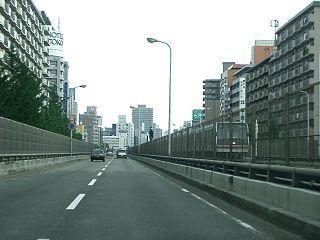Median strip
A median strip, central reservation, roadway median, or traffic median is the reserved area that separates opposing lanes of traffic on divided roadways such as divided highways, dual carriageways, freeways, and motorways. The term also applies to divided roadways other than highways, including some major streets in urban or suburban areas. The reserved area may simply be paved, but commonly it is adapted to other functions; for example, it may accommodate decorative landscaping, trees, a median barrier, or railway, rapid transit, light rail, or streetcar lines.
"Central reservation" redirects here. For other uses, see Central reservation (disambiguation).Regional terminology[edit]
There is no international English standard for the term. Median, median strip, and median divider island are common in North American and Antipodean English. Variants in North American English include regional terms such as neutral ground in New Orleans usage.
In British English the central reservation or central median is the preferred usage; it also occurs widely in formal documents in some non-British regions such as South Africa, where there are other informal regional words (for example middelmannetjie, which originally referred to the hump between wheel ruts on a dust road).[1][2] Neutral section and central nature strip are coinages in Australian English.
Additionally, different terminology is used to identify traffic lanes in a multi-lane roadway. North American usage calls the leftmost lanes located closest to the roadway centerline the "inner" lanes, while British usage calls these lanes the "outer" lanes. Thus, it is less confusing to call these central lanes the "passing", "fast", or "overtaking" lanes in international contexts, instead of using the ambiguous inner/outer distinction. Regional differences between right-hand traffic and left-hand traffic can cause further confusion.
Some freeways in North America include "inverted" medians, which separate roadways running in the opposite direction from the standard for the country they are located in. Roads are so designed for a number of reasons, including to save space, for the creation of continuous flow intersections, or for diverging diamond interchanges.
Inverted medians are also used in rare cases on local streets that historically had unusual traffic patterns, such as Bainbridge Street between 3rd Street and 5th Street in Philadelphia.
Bus rapid transit[edit]
Central reservations may also be used for reserved bus lanes, as in Istanbul's Metrobus, Los Angeles's J Line and Bogotá's TransMilenio. Center-lane running and island platforms installed in the medium reduce conflicts with stopped and parked cars as well as pedestrians near the curb, thus speeding service.




